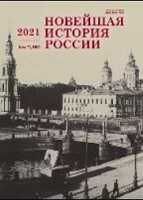Кто есть кто в академическом НИИ: образ научного учреждения в последние десятилетия советской власти (1963–1991 гг.)
Who is Who in an Academic Research Institute: The Image of a Scientific Institution in the Last Decades of Soviet Power (1963–1991)
Author(s): T.N. LaptevaSubject(s): Education, Recent History (1900 till today), History of Education, Post-War period (1950 - 1989), Sociology of Education
Published by: Издательство Исторического факультета СПбГУ
Keywords: science; scientists; research team; Research Institute; Academy of Sciences; USSR;
Summary/Abstract: The article aims to provide an account of an academic scientific institute as an independent functioning unit of the Soviet scientific system from the first half of the 1960s until the end of the Soviet era. This was a time of gradual decline of scientific achievements of the USSR after resounding successes in the 1950s. During these years, the growth rate of the number of scientists sharply decreased, and the understanding of their role in the institutions of the USSR Academy of Sciences changed. Using a wide range of archival documents, some used for the first time, the functions of each category of research institute employees, their qualifications, boundaries of authority, and ways to strengthen their position are described as factors that affect the effectiveness of research activities of the institute. Estimates of contemporaries - members of the academic community, given to certain social groups of research institute collectives - are provided. The academic research institute created favorable conditions for free scientific work by organizing a system of positions. Researchers could use the assistance of highly qualified support staff, were spared from mechanical labor and responsibility for technical processes, and had to deal only with science. The formal status of researchers at the Academy during the 1960s - 1980s steadily strengthened until the end of the Soviet era, in which they had the right to influence the election of the director of the institute at the general meeting of the collective, which has also contributed to democratization in the late 1980s. The inability to intervene in individual research processes made it difficult to get rid of vain employees and thus reduced the effectiveness of Soviet scientific institutions.
Journal: Новейшая история России
- Issue Year: 11/2021
- Issue No: 37
- Page Range: 994-1006
- Page Count: 13
- Language: Russian

